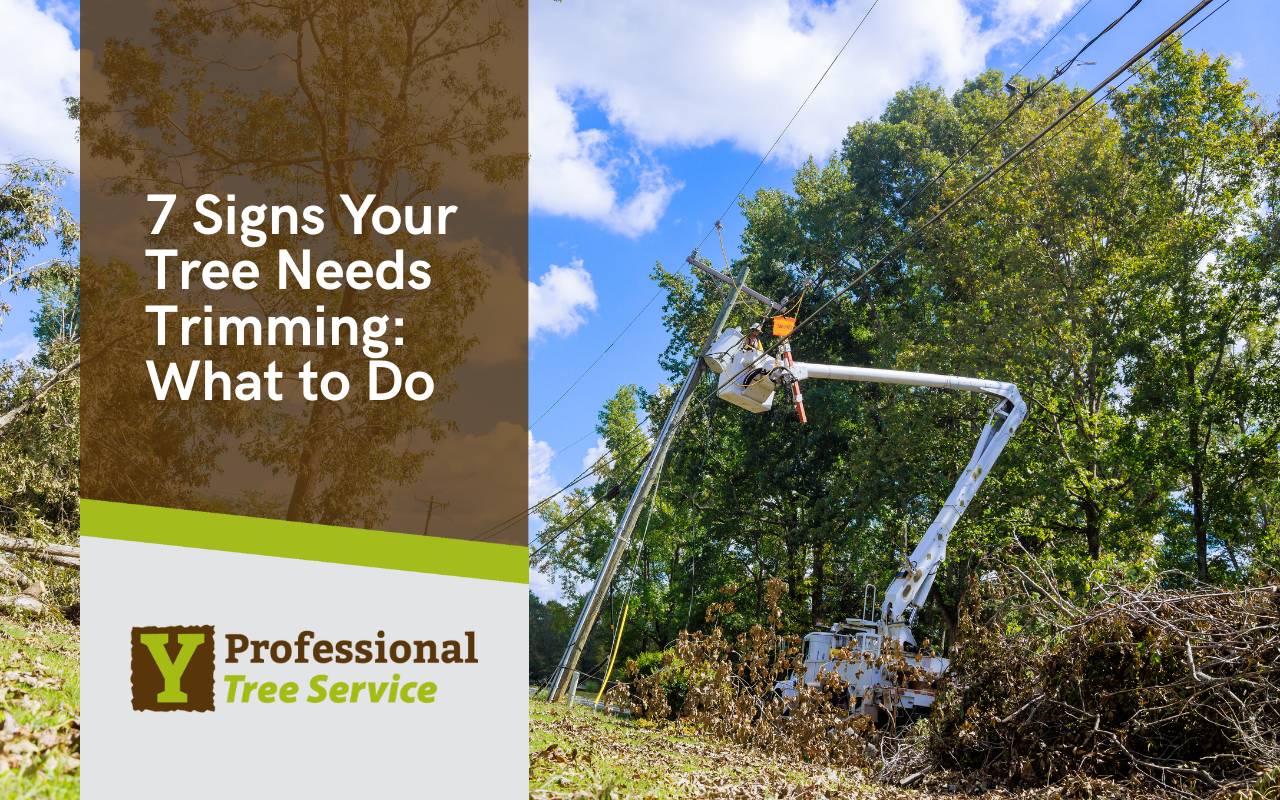
Observe the trees in your backyard, standing tall and proud. Overgrown branches can pose risks to property and safety. If you’ve wondered How Often Should You Trim Trees? or Can You Trim Trees in Summer?, this guide will help. Learn to spot subtle and clear signs that your tree needs attention. Branches near power lines or uneven canopies are common indicators. By noticing these, you maintain tree health and yard safety.
Branches Touching Power Lines: A Potential Hazard
Limbs brushing power lines can disrupt service, spark fires, or cause surges. This is a serious warning among Signs of Overgrown Tree Branches. Only licensed professionals should prune near live wires. Contact your electric provider or arborist for safe removal. Clearing branches prevents outages and protects your home and the tree itself.
Uneven Canopy: Indications of Overgrowth
- If one side of the tree is fuller than the other, it may struggle to balance.
- Clustered top branches make limbs prone to breaking during storms.
- Selective thinning restores symmetry, sunlight, and airflow.
- Regular seasonal checks prevent bigger risks from uneven growth.
Dead or Diseased Branches: Signs of Declining Health
Dry limbs or spotted branches warn of declining health. Dead branches break easily. Diseased limbs invite pests and decay. Removing these is a crucial step among Signs of Overgrown Tree Branches. Use sharp, clean tools and consider sealing cuts if recommended. Consistent monitoring for leaf discoloration and bark abnormalities helps prevent further issues.
Excessive Leaf Dropping: A Cry for Help
Leaves falling outside normal seasons indicate stress. Causes include water deficiency, pests, or nutrient issues. This sign shows your tree may need a trim. Prune dense areas to redirect energy to healthy growth. Check soil and fertilize as needed. Maintaining proper airflow reduces stress on leaves, keeping leaf drop normal.
Crossing or Rubbing Branches: Damaging Interactions
- Branches rubbing wear down bark and invite pests.
- Prune crisscrossed limbs to improve internal structure.
- Cut branches growing toward the center for a healthier canopy.
- Regular trimming reduces weak spots and potential infections.
Visible Cracks or Cavities: Structural Weakness
Splits or hollows in branches signal serious trouble. Cracks may form from storms or freeze-thaw cycles. Weak areas can snap, posing danger. Trim compromised limbs to reduce weight and prevent breaks. Consult an arborist for deep trunk cracks. Clean cuts outside cracks allow natural healing and maintain tree integrity.
Unusual Growth Patterns: Red Flags to Watch For
Water sprouts and multiple stems indicate stress or past damage. These Signs Your Tree Needs Trimming require closer inspection. Prune weak shoots to focus energy on strong branches. Check regularly for sprouts and remove early. Proper structure ensures resilience and balanced growth.
When to Trim: Seasonal Considerations
Late winter to early spring is ideal for most trees. Dormant trees heal faster with less sap loss. If hazards appear in other seasons, remove dangerous limbs immediately. Light summer pruning is possible but avoid heavy cuts. Prioritize safety and tree health when selecting trimming times.
How to Trim Safely and Effectively
- Wear goggles, gloves, and sturdy shoes.
- Use hand pruners, loppers, and saws as appropriate.
- Never stand under the branch being cut.
- Ensure ladder stability and have a helper if possible.
- Call a professional for big branches or power line proximity.
- Use the three-cut method for large limbs to prevent bark tearing.
- Cut smaller limbs at a 45-degree angle above buds for healthy regrowth.
Ensuring the Longevity of Your Trees
Watch for branches near power lines, uneven canopies, and dead limbs. These Signs Your Tree Needs Trimming protect yard safety and tree health. Seasonal timing, proper tools, and safe techniques are essential. Regular pruning prevents hazards and boosts tree vitality. Whether considering How Often Should You Trim Trees? or Can You Trim Trees in Summer?, this guide ensures thriving landscapes.
FAQs
How often should I trim my trees?
Most trees benefit from pruning once a year, ideally in late winter or early spring.
What are the common Signs of Overgrown Tree Branches?
Indicators include branches touching power lines, uneven canopy, dead limbs, and crossing branches.
Can you trim trees in summer?
Light pruning is possible, but heavy trimming can stress trees and encourage unwanted growth.
Why is trimming dead or diseased branches important?
It prevents pests, disease spread, and improves overall tree health and safety.
When should I call a professional arborist?
If branches are near power lines, large limbs need removal, or structural cracks appear, hire a certified arborist.
For expert assistance, contact our tree trimming specialists to ensure safety and healthy trees.
